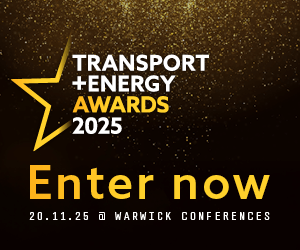Rob Austin, Client Relationship Manager at UK Power Networks Services, discusses the major milestones you’ll need to reach to transition your fleet from fossil fuels to zero emission electricity.
Almost all the five million commercial vehicles in the UK are powered by fossil fuels.[1] With the climate clock running out, many large fleet operators are now taking the most efficient route possible to reduce emissions: electrifying their vehicles. With a business to run – and products to deliver, goods to transport, or vital infrastructure to maintain – this can feel a bit like building the tracks while the train is running.
If this sounds like your business, here are the places to start:
1. Develop an EV strategy and an associated business case
This may seem like an obvious place to begin; however, this is more than simply setting a long-term goal with interim objectives. It’s imperative you understand what you have in terms of power infrastructure, capacity, and assess where your employees are located, the routes they will take, and how much charge they will need. Through predictive analytics, you can understand the best locations for your charge points, how many you’ll require, what specification you will need and what size they should be. This will allow you to make sure you have resilient EV infrastructure in place to enable electrification, while optimising the costs and meeting your sustainability targets. Closely related to this is developing a business-case to move forward with electrification, which assesses the financial impact, the long-term benefits, and scalability of your operations.
2. Navigate capacity constraints to install chargers
One of the primary challenges to fleet electrification is making sure your vehicles have sufficient electrical capacity to charge. Your sites will have a maximum capacity limit, which may not be sufficient for dozens of new chargers. There is a balancing act here because faster chargers – which are more attractive for obvious reasons – use more capacity and may be more expensive. Ultimately this means some upfront investment may be required to build additional charging infrastructure. We provide financing solutions to help our clients be certain about meeting this challenge and plan for the future with confidence. This step can also involve an assessment of other low carbon technologies to help increase cost efficiency, such as on-site solar PV, battery storage, or vehicle-to-grid (V2G). However, for most businesses the most effective tool will be smart charging and vehicle charging prioritisation.
3. Integrate smart charging and vehicle prioritisation
Smart charging and vehicle prioritisation solutions can automatically pick and choose what vehicles to charge, by how much, and when. The innovative technology unlocks the power to only charge your vehicles overnight (when everything else is switched off and there is plenty of capacity available), or only charge certain vehicles part of the way to save capacity. This allows you to stay within your maximum capacity limit, meaning you don’t have to invest in new electrical infrastructure. Smart charging systems will also consider your business’ needs and ensure that all vehicles always have enough charge to make their deliveries on time. The most efficient smart charging solutions may also reduce recharging costs for your fleet because they could manage charging to occur when electricity is cheaper. This is where you may also consider which energy tariff to use, depending on your long-term plans.
4. Deploy a payment and management solution
Once you have a charging solution that works for your business, it’s time to manage your fleet on day-to-day basis. There are two main options here: fleet charging for all your vehicles at a central depot, or charging by individuals, where employees top-up at public points or even at home. The first is more straightforward for tracking, however for many organisations individual charging will be more cost effective. If so, an effective solution will give employees an app or card to use on the go, which centralises all fleet costs in a single management platform. This allows fleet managers to support drivers and oversee operations efficiently. Home charging can also by optimised by assessing employees use profiles and adjusting accordingly.
Ultimately every fleet operator needs to cut its carbon emissions as quickly and efficiently as possible. While this is by no means an exhaustive playbook, it does outline the primary initiatives you’ll need to undertake in the transition. We are uniquely placed to support you through the journey.
Get in touch with our experts for more: https://www.ukpowernetworksservices.co.uk/contact/
[1] https://www.smmt.co.uk/2021/05/van-growth-drives-uk-commercial-vehicle-parc-to-record-highs/
Image courtesy of UK Power Networks Services.















